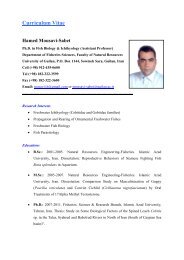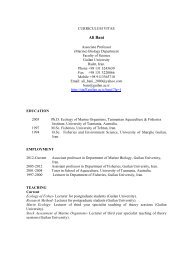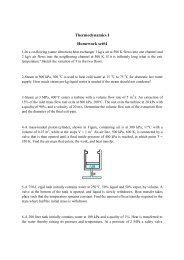Medical Tourism in Developing Countries
Medical Tourism in Developing Countries
Medical Tourism in Developing Countries
- No tags were found...
Create successful ePaper yourself
Turn your PDF publications into a flip-book with our unique Google optimized e-Paper software.
18 ● <strong>Medical</strong> <strong>Tourism</strong> <strong>in</strong> Develop<strong>in</strong>g <strong>Countries</strong>produced and the way <strong>in</strong> which it is produced. In order to enable thistransformation, it is likely that relevant <strong>in</strong>stitutions were sufficientlydeveloped.Descriptions such as “high-tech,” “service oriented,” and “powerhouse”raise questions about the basis for divid<strong>in</strong>g countries <strong>in</strong>to less and moredeveloped groups. The experience of India, Malaysia, and Thailand, amongothers, might br<strong>in</strong>g to an end the post–World War II division of the world<strong>in</strong>to the more and the less developed countries. Both Thomas Friedmanand Clyde Prestowitz 63 po<strong>in</strong>t out how some develop<strong>in</strong>g countries are will<strong>in</strong>gand <strong>in</strong>creas<strong>in</strong>gly able to race with the United States. Paul Kennedy suggestedthat countries on top of the totem pole do not stay there forever, 64so by implication, the superior technological position of the United Statesis not set <strong>in</strong> stone. Moreover, the economic historian Angus Maddisonnoted that <strong>in</strong> the 18 centuries before 1820, the countries that are todayconsidered less developed produced some 80 percent of the world’s output.The technological revolution slowed them down (so that at the beg<strong>in</strong>n<strong>in</strong>gof the twentieth century, their share was down to 40 percent) but <strong>in</strong> 2005,their share was once aga<strong>in</strong> slightly above that of the more developed countries.65 Clearly the demarcations between more and less developed countriesare chang<strong>in</strong>g, as is the composition of both groups. 66The <strong>Tourism</strong> and <strong>Medical</strong> Sectors <strong>in</strong> the <strong>Countries</strong> under StudyJust how important are the tourism and medical sectors <strong>in</strong> the countriesunder study? In answer, <strong>in</strong>dicators of the relative size of those sectors arepresented <strong>in</strong> table 1.2. The proportion of GDP derived from the travel andtourism <strong>in</strong>dustry (TTI) <strong>in</strong>dicates its importance <strong>in</strong> the economy. Accord<strong>in</strong>gto these data, only half of the countries under study have double-digit values,none of which exceeds 20 percent. This <strong>in</strong>dicator had been used <strong>in</strong> aprevious study by the author to classify countries as “tourist-dependent,”“tourist-friendly,” or “tourist-restra<strong>in</strong>ed.” 67 None of the countries listed <strong>in</strong>table 1.2 falls <strong>in</strong>to the tourist-dependent category, although Costa Rica,Cuba, Jordan, Malaysia, and Thailand are tourist-friendly (as their TTIcontributes between 10–20 percent of their GDP). While it may not besurpris<strong>in</strong>g that tourism is an important component of Caribbean exports,it is less obvious that tourism cont<strong>in</strong>ues to be America’s biggest serviceexport. 68The relative importance of the medical sector is assessed by observ<strong>in</strong>gthe public and private sector expenditures on health as a proportion ofGDP. Only <strong>in</strong> Costa Rica and Cuba does the public sector expenditureexceed 6 percent while Jordan and South Africa are the only countries
















